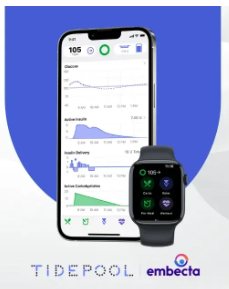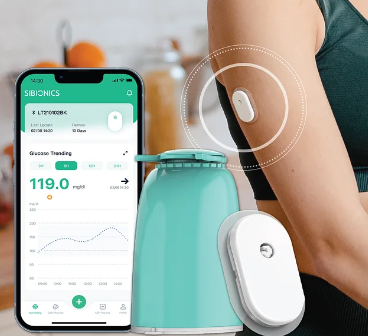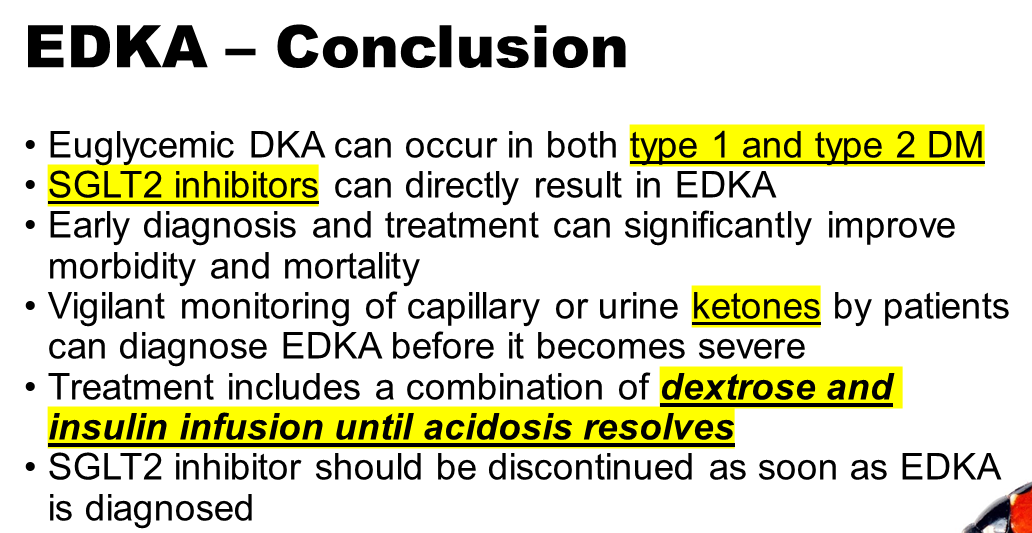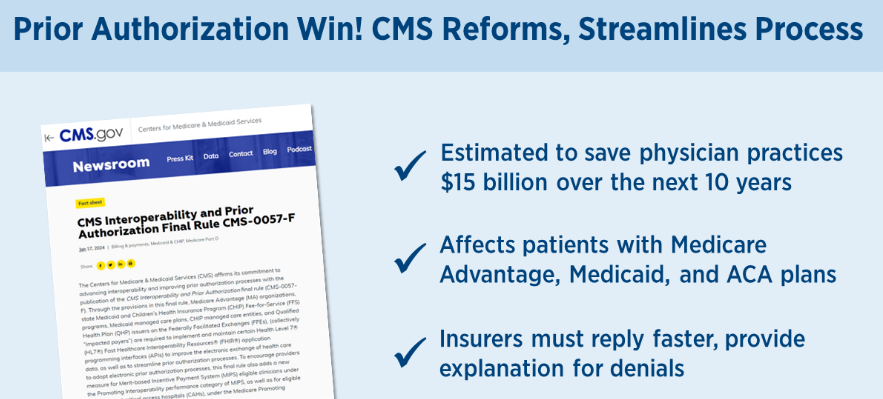embecta Announces FDA 510(k) Submission for Insulin Patch Pump announced by Embecta, 9 January 2024.
 Embecta Corp., a global diabetes care company with a 100-year legacy in insulin delivery, announced that it has submitted a 510(k) premarket filing to the U.S. Food and Drug Administration (FDA) for a proprietary disposable insulin delivery system.
Embecta Corp., a global diabetes care company with a 100-year legacy in insulin delivery, announced that it has submitted a 510(k) premarket filing to the U.S. Food and Drug Administration (FDA) for a proprietary disposable insulin delivery system.
“This patch pump is intended for people who require insulin to manage diabetes and is informed by the unique needs of people with type 2 diabetes and their healthcare providers,” said Colleen Riley, Chief Technology Officer, embecta. “We worked with them to address the needs of those who may require more daily insulin and are looking for a simplified and convenient option for automated insulin delivery that offers the ease of use and discretion of a patch pump, along with a larger 300U insulin reservoir.”
“Since we became an independent company in April 2022, our team has been working diligently on our priorities, which include investing for growth — notably in the development of a patch pump,” said Devdatt (Dev) Kurdikar, Chief Executive Officer of embecta. “The 510(k) submission of our patch pump to the FDA is an important step in the advancement of our strategic priorities, and we look forward to working with the FDA to seek clearance for a product that we believe has the potential to positively impact type 2 diabetes management for many people.”
embecta continues to advance its patch pump development program, with plans for a closed-loop version including an insulin-dosing algorithm in a future FDA submission.
Read more: embecta Announces FDA 510(k) Submission for Insulin Patch Pump
Apple, locked in patent fight with Masimo, redesigns smartwatch by Susan Kelly for MedTechDive.com, 16 January 2024.
 While it awaits the outcome of its appeal, Apple is laying the groundwork to bring to market a redesigned smartwatch without the pulse oximetry function at the center of its patent dispute with Masimo.
While it awaits the outcome of its appeal, Apple is laying the groundwork to bring to market a redesigned smartwatch without the pulse oximetry function at the center of its patent dispute with Masimo.
In Masimo’s letter to the U.S. Court of Appeals for the Federal Circuit, the company’s attorney said Apple explained to the CBP that its redesigned watch products “definitively do not contain pulse oximetry functionality.” The Federal Circuit court is now considering whether to extend the stay as it reviews Apple’s appeal of the ITC’s sales ban. Joe Kiani, Masimo CEO and founder, has said he is open to a settlement over the blood oxygen measuring technology.
Read more: Apple, locked in patent fight with Masimo, redesigns smartwatch
SiBionics GS1 CGM: a deep dive by Tim Street for Diabettech.com, 21 January 2024.
 If you have type 1 and use social media, you can’t have missed the adverts for the newly CE marked SiBionics GS1 CGM system. They are everywhere. Facebook. TikTok. Instagram. You can’t avoid them. In general they tell you that the GS1 is great. It doesn’t need fingerpricks and it has an “amazingly accurate” MARD of 8.83%. But if you dig a little deeper, it’s not all roses, and if you’re using insulin, you might want to consider whether these CGMs are really safe… Consider the following:
If you have type 1 and use social media, you can’t have missed the adverts for the newly CE marked SiBionics GS1 CGM system. They are everywhere. Facebook. TikTok. Instagram. You can’t avoid them. In general they tell you that the GS1 is great. It doesn’t need fingerpricks and it has an “amazingly accurate” MARD of 8.83%. But if you dig a little deeper, it’s not all roses, and if you’re using insulin, you might want to consider whether these CGMs are really safe… Consider the following:
-
-
-
- The Advertised MARD: Their measure of accuracy is skewed y type of diabetes and even more so by glucose level at which the measures are taken, which is not evident from any of their social media advertising.
- Social media claims about the system: There have been multiple statements from “SiBionics” on their Facebook pages in response to potential customer queries. Unfortunately, they don’t seem to align with either their approval or their user guide. The two main areas of concern relate to the following items:
-
- The age for which the device is approved,
- The device is not approved for determining treatments, so the advice that you don’t need fingerpricks is a little misleading.
-
- The Price: It’s one of the more expensive options, at face price, coming in at £56 and appearing to not offer VAT removal for those with medical conditions. Given how much lower cost other sensors are, this seems a little silly.
-
-
Thoughts from Tim: I’ve done a lot of these sensor comparisons to fingerpricks, and one thing that’s been very clear is that where there has been a high quality clinical trial, the data that they produce compares pretty well to fingerprick comparisons. Dexcom G5 and G6, Libre2 and Libre3 have all stuck to this pattern. Other newer sensors from a multitude of companies with some less reliable studies have proven to be much less close between fingerpricking and clinical study data.
This appears to be one of the latter. The marketed MARD at 8.83% clearly isn’t true for those with type 1, and this is present in their own data. Even the user guides acknowledge that this sensor isn’t accurate enough to determine insulin doses.
Read more: SiBionics GS1 CGM: a deep dive
Dr. Jeremy Pettus Discusses MicroDosing with Glucagon, by TCOYD, January 2024.
Urgent Message about Diabetic Ketoacidosis (DKA) and T1D, by Jack Griswold (Smiling Jack), January 2024.
Hallo again my T1D friends … I am coming to you today to offer a bit of personal advice about Diabetic Ketoacidosis (DKA). Last month I (we) lost a very dear friend apparently due to rapid DKA development due to either a failure of CGM, pump, or both. It surprised me as well as shocked me.
Growing up with T1D, I always thought that DKA was something that took days or weeks to do damage. Of course, I was on long-lasting NPH insulin thus it was perceived as a slow process. These days with very rapid insulin, we are in an entirely different scenario.
I have always kept some urine ketone strips around to check for DKA whenever I had my occasional persistent high BG above 300-400 (usually due to my doing something foolish like not bolusing Oops!). But I have never tested positive thus I’vd shrugged my shoulders and never thought about it much.
Check out this article about DKA from the University of Washington: Insulin Pumps and Diabetic Ketoacidosis (DKA) How to keep it from happening to you
Now there are much more accurate BLOOD Ketone (individually wrapped test strips that will last much longer) available. My Endocrinologist recently sent a prescription in for these strips at my local pharmacy (rather expensive though). They also require a test meter. I went to Amazon and found the meter for $35 and the strips for less than half price at the pharmacy. Ha! I opted for the Abbott Precision Xtra brand although there are several others. Your choice.
Owning a Blood Ketone Meter (to use for suspected/possible DKA) is NO DIFFERENT from having quick-acting Glucagon for your very LOW BGs.
Please realize that I am NOT trying to scare the Hell out of you!! I want you all to be street-wise about this REAL threat and prepare yourselves. As sad as I was about my dear friend’s loss, I would be sadder still if I subsequently heard of any of you succumbing to DKA.
So if you roll over in bed at 3am due to your CGM alarm, DO NOT simply hit the snooze button and go back to sleep! Get up and do a finger poke BG test immediately. If it’s way high, do a Ketone test. DO NOT just bolus using your pump. Break out a syringe and give yourself an injection. Change your site! Get your significant other, diabuddy, and anyone else who understands to do something. Get to an emergency room. Ya can’t ignore this. This is serious!
 OKAY, I’ll get off of my soapbox now and simply hope that this helps you get better prepared. Be sure to have your emergency kit prepared as well! Always remember that “LIFE IS STILL GOOD, even with T1D.”
OKAY, I’ll get off of my soapbox now and simply hope that this helps you get better prepared. Be sure to have your emergency kit prepared as well! Always remember that “LIFE IS STILL GOOD, even with T1D.”
To join in on Smiling Jack’s newsletter, which goes out twice/month, send an email requesting so to either:
$15 billion win for physicians on prior authorization by Kevin B. O’Reilly for AMA-ASSN.org, 18 January 2024.
 Under the leadership of Administrator Chiquita Brooks-LaSure, the Centers for Medicare & Medicaid Services (CMS) has released a final rule making important reforms to prior authorization to cut patient care delays and electronically streamline the process for physicians. Together, the changes will save physician practices an estimated $15 billion over 10 years, according to the U.S. Department of Health and Human Services (HHS).
Under the leadership of Administrator Chiquita Brooks-LaSure, the Centers for Medicare & Medicaid Services (CMS) has released a final rule making important reforms to prior authorization to cut patient care delays and electronically streamline the process for physicians. Together, the changes will save physician practices an estimated $15 billion over 10 years, according to the U.S. Department of Health and Human Services (HHS).
“When a doctor says a patient needs a procedure, it is essential that it happens in a timely manner,” said HHS Secretary Xavier Becerra. “Too many Americans are left in limbo, waiting for approval from their insurance company.” The administration’s action, he said, “will shorten these wait times by streamlining and better digitizing the approval process.”
While payers claim that prior authorization requirements are used for cost and quality control, a vast majority of physicians report that the protocols lead to unnecessary waste and avoidable patient harm. One-third of the 1,001 physicians surveyed (PDF) by the AMA reported that prior authorization has led to a serious adverse event for a patient in their care.
Read more: $15 billion win for physicians on prior authorization
Sugar-loving fruit bats’ genes could point to new diabetes treatments by Nadav Ahituv for LiveScience.com, 10 January 2024.
 Humans are not the only mammals that love sugar. Fruit bats do, too, eat up to twice their body weight in sugary fruit a day. However, unlike humans, fruit bats thrive on a sugar-rich diet. They can lower their blood sugar faster than bats who rely on insects as their main food source. We are a team of biologists and bioengineers, working to determine how fruit bats evolved to specialize on a high-sugar diet Our research sent us to Lamanai, Belize, for the Belize Bat-a-thon, an annual gathering where researchers collect and study bats.
Humans are not the only mammals that love sugar. Fruit bats do, too, eat up to twice their body weight in sugary fruit a day. However, unlike humans, fruit bats thrive on a sugar-rich diet. They can lower their blood sugar faster than bats who rely on insects as their main food source. We are a team of biologists and bioengineers, working to determine how fruit bats evolved to specialize on a high-sugar diet Our research sent us to Lamanai, Belize, for the Belize Bat-a-thon, an annual gathering where researchers collect and study bats.
In our newly published research in Nature Communications, we and colleagues Seungbyn Baek and Martin Hemberg used a technology that analyzes the DNA of individual cells to compare the unique metabolic instructions encoded in the genome of the Jamaican fruit bat, Artibeus jamaicensis, with those in the genome of the insect-eating big brown bat, Eptesicus fuscus. Specifically, we looked at the genes, regulatory DNA and cell types in two significant organs involved in metabolic disease: the pancreas and the kidney.
We found Jamaican fruit bats have more insulin-producing and glucagon-producing cells than big brown bats, along with regulatory DNA that primes fruit bat pancreatic cells to initiate the production of insulin and glucagon. Together these two hormones work to keep blood sugar levels balanced even when the fruit bats are eating large amounts of sugar.
Fruit bat kidneys need to be equipped to remove from their bloodstreams the large amounts of water that come from fruit while retaining the low amounts of salt in fruit. We found Jamaican fruit bats have adjusted the compositions of their kidney cells by their diet, reducing the number of urine-concentrating cells so their urine is more diluted with water compared with big brown bats.
Read more: Sugar-loving fruit bats’ genes could point to new diabetes treatments


I am sorry Fruit Bats still give me the creeps.I hope they lead to new treatments, but darn they are creepy. By the way, I once erected concrete trees to encourage nesting by Indiana Bats. Yeah unfortunately there were no Indiana bats in the area. Turns out the local newspaper
likes to poke fun at them occasionally. Oh well.
Changing CMS rules on pre-auth is a good thing for patients and doctors.
As a person with CKD stage 3a and a doc who wants to him on the SGLT inhibitor CKD freaks me out. Seriously. (Maybe even more than Bats).